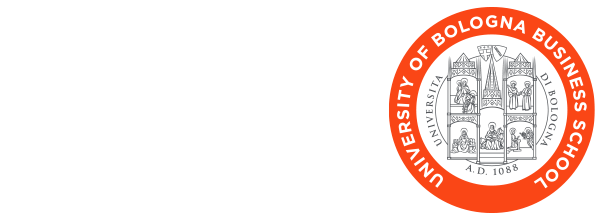
Open Innovation: what it is and how Open Innovation works
10 March 2025Innovation is now one of the key words in the global market.
Over the past few years, several business innovation models have been experimented with, all based on internal information exchange, where each company works for itself. However, another way of innovating is now recognized as the most effective: open or collaborative innovation.
What is Open Innovation?
Open innovation refers to an innovation paradigm that encourages companies to use external ideas and share their internal knowledge with others to develop new products, services, and solutions. In other words, companies no longer limit research and development to their internal processes but actively seek collaborations with other businesses, universities, startups, research organizations, and even consumers. A wider network of input and expertise accelerates the innovation process.
Ideas and projects are not confined to a single entity but open up to a continuous flow of knowledge and exchange of experiences, allowing companies to acquire technologies and develop innovations that may not be possible in organizational isolation.
Who coined the term “Open Innovation”?
Management professor Henry Chesbrough published a book in 2003 titled Open Innovation: The New Imperative for Creating and Profiting from Technology[1]. Chesbrough, a professor at the University of California, Berkeley, theorized the opening of company boundaries to seek ideas, technologies, and solutions to foster a more dynamic and faster flow of innovations and create an ecosystem of external partners, including other businesses, universities, and startups.
What are the most common innovation models?
In the field of Open Innovation, several models stand out, each with different characteristics and applications. These are mainly divided into two categories: inbound innovation and outbound innovation.
Inbound Innovation: this model occurs when a company acquires ideas, technologies, or knowledge from outside its organization through collaborations with other companies, partnerships with universities, or the purchase of innovative technologies.
Outbound Innovation: companies share or sell their innovations and technologies to other organizations, release technology to a startup, sell patents to another company, or share technical solutions to gain financial rewards or other advantages. Outbound innovation is a way to monetize internally developed technologies.
Collaborative Innovation: another model within Open Innovation involves working with other companies and organizations to create new solutions. In this case, the parties collaborate on a shared project, pooling their resources and expertise. This approach is particularly used in scientific research, biotechnology, and advanced technology sectors.
Disruptive Innovation: although not exclusively tied to Open Innovation, disruptive innovation fits well within this model, as it often comes from small companies or startups that introduce radically new technologies that change how an entire industry functions. Companies that adopt open innovation are more open to recognizing and integrating these disruptive innovations.
What are the stages of innovation?
The innovation process, even in the context of open innovation, consists of several stages: the first step is to generate innovative ideas and solutions – ideation – that can come from both inside and outside the company. This is the time for brainstorming, market research, and collaboration with external partners.
Once a promising idea is found, it moves to the development phase, defining prototypes, and conducting relevant tests.
It is followed by large-scale implementation, possibly through new strategic alliances, and then by diffusion and commercialization.
Some Examples of Open Innovation
Procter & Gamble is one of the most well-known examples of open innovation. In 2000, the company launched the Connect + Develop program, which allows P&G to collaborate with universities, startups, and other businesses to discover and develop new technologies and products.
Lego adopted open innovation mainly through the Lego Ideas program, which invites fans and customers to propose new brick sets or product ideas. When an idea receives a certain number of votes, Lego evaluates whether to produce it, recognizing the creators’ contribution.
Tesla decided to open its electric car patents to allow anyone to use them and contribute to the development of the technology. The idea is that by allowing more companies to access its innovations, Tesla can accelerate the spread of electric cars and the evolution of the sector.
Professional Opportunities Related to Open Innovation
This innovative theory is creating new career opportunities: from innovation managers to heads of startup collaborations. Among the most in-demand roles in the market are:
Innovation Manager: responsible for managing and coordinating open innovation processes.
Innovation Consultant: a professional who provides consulting services to companies to implement open innovation models, facilitating the creation of partnerships and identifying technological opportunities.
Open Innovation Analyst: a professional who studies innovation trends and identifies potential collaborations with external partners, startups, or research centers.
Business Development Manager: a professional who seeks new business opportunities through external collaborations, managing the expansion of an innovation portfolio.
As with every new market demand, Bologna Business School has created high-level training programs dedicated to this field. Among the most relevant are:
The Master in Artificial Intelligence and Innovation Management, 1500 hours of full-time learning in English; 12 months of study dedicated to software programming, databases, SQL language, statistics, accounting, and finance.
The Executive Master in Technology and Innovation Management (EMTIM), a part-time weekend program lasting 12 months in Italian, aimed at training professionals capable of managing technological innovation while addressing both technical and managerial issues.
The Executive Master in Artificial Intelligence for Business, 12 months, part-time hybrid in English, designed for professionals who want to acquire a strong skill set to leverage the potential of AI in the business context.
The internship at the end of each program, along with the international faculty and the powerful global network of the School, ensures preferential entry into the workforce.
In addition to the more traditional and innovative Master (MBA, Professional, or Executive), BBS offers specialized vertical courses focused on a specific topic.
The Open Program in Artificial Intelligence and Generative AI, part-time on campus, in Italian and lasting 5 days, is designed to provide an in-depth and practical understanding of how generative AI can be integrated into business processes to enhance productivity and accelerate innovation.
The Open Program in Technology & Innovation Management, part-time on campus in Italian and lasting 8 days, focuses on acquiring the necessary skills to address strategic, organizational, and operational challenges related to innovation management.
Open innovation represents a fundamental shift in how companies approach innovation, promoting a more open and collaborative model. Companies that adopt this approach are able to gather fresh ideas, improve competitiveness, and face market challenges with greater agility; a new trend that requires professionals capable of guiding companies toward innovation. Bologna Business School is the most effective and concrete answer to this new demand.
[1] https://books.google.it/books/about/Open_Innovation.html?id=4hTRWStFhVgC&redir_esc=y
